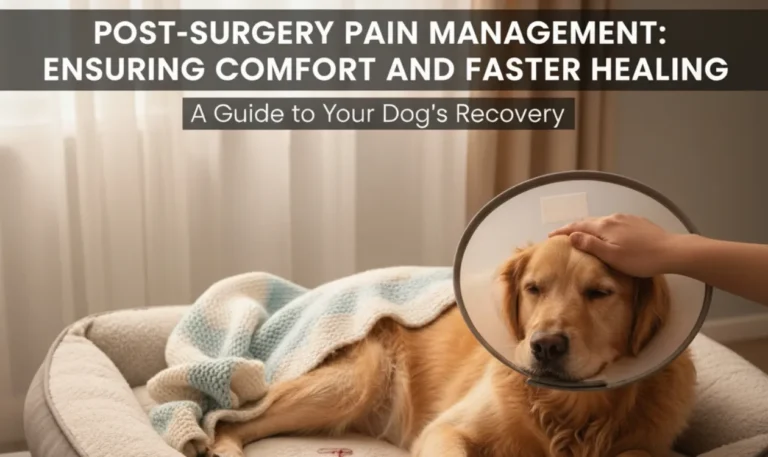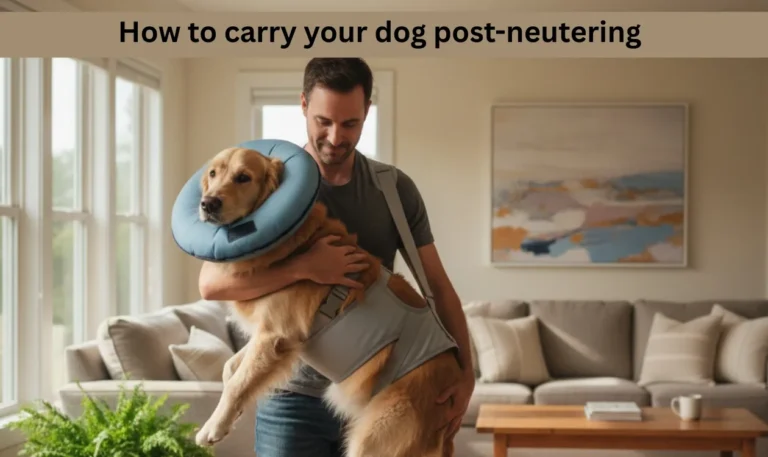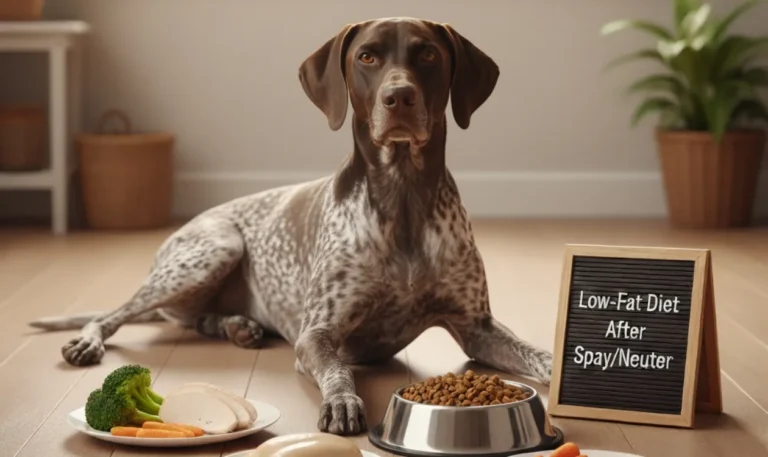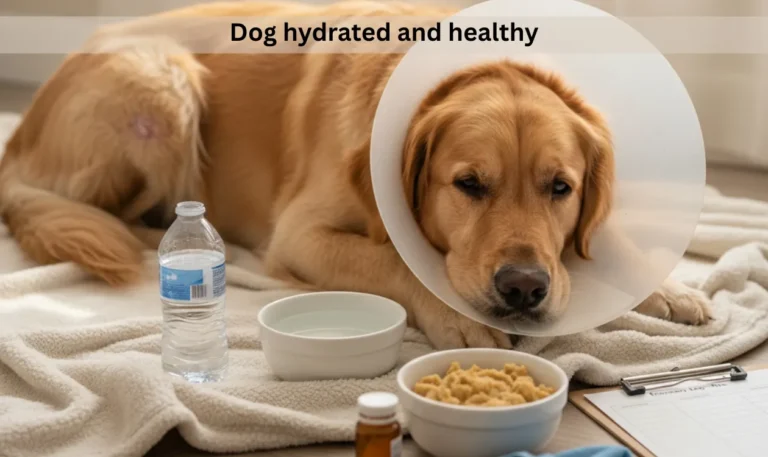Dog Swollen After Neutering — What’s Normal and When to Worry
Bringing your dog home after neutering is a moment of relief — the surgery’s done, and your pup is on the road to recovery. But what happens when you notice swelling near the incision or scrotal area? It’s one of the most common post-surgery concerns among dog owners.
Some swelling is a normal part of healing, but in other cases, it can mean infection, fluid buildup, or other complications that require quick attention. Knowing the difference can help you act fast and keep your dog comfortable.
Let’s explore what’s normal, what’s not, and how to safely reduce dog swollen after neutering.

Why Dogs Experience Swelling After Neutering
Swelling is your dog’s body responding to the trauma of surgery. When tissues are cut or stitched, the immune system releases inflammatory cells and fluids to start healing.
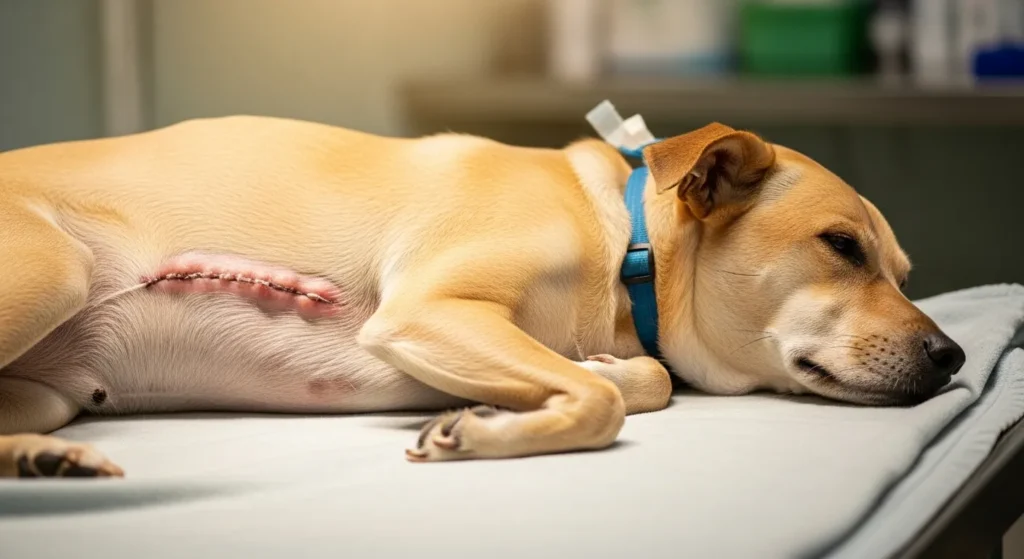
That process can cause:
- Puffiness or firmness around the incision
- Slight redness or warmth
- Tenderness when touched
In most cases, this mild inflammation is temporary and part of a healthy recovery. The swelling should gradually decrease within a few days to a week after the procedure.
However, excessive or worsening swelling can point to a problem beneath the surface — such as fluid buildup, infection, or irritation.
Learn More About
Normal Swelling After Neutering: What to Expect
During the first 24 to 48 hours, it’s completely normal to see some mild swelling or discoloration near your dog’s incision.
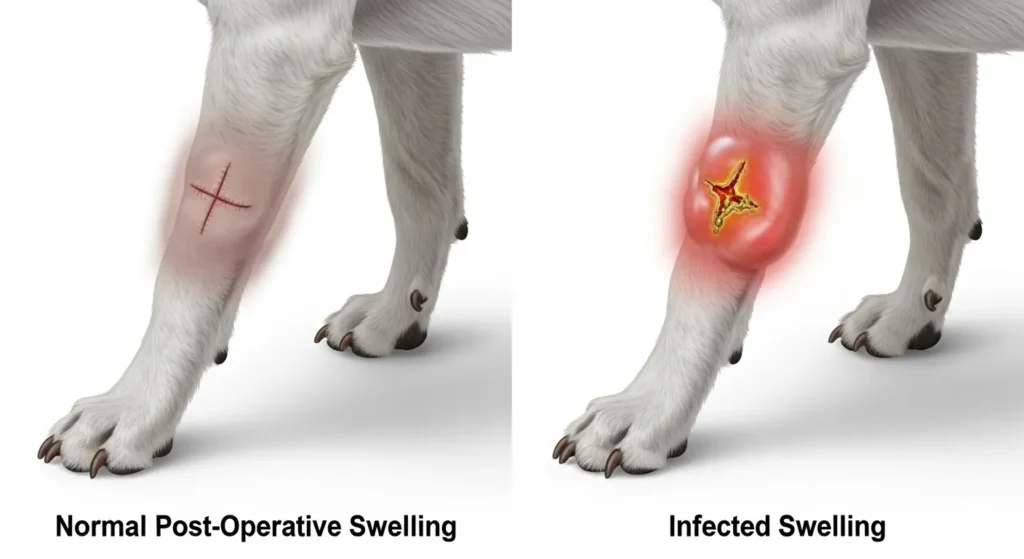
Normal Signs Include:
- Small amount of puffiness or firmness under the skin
- Light pink, red, or slightly bruised skin around the area
- Dog behaving normally — eating, drinking, walking comfortably
- Swelling peaks by day 2 or 3 and begins to reduce
This mild swelling typically fades over the next 7–10 days as healing continues.
If your dog is resting well, not excessively licking the area, and the incision looks clean, everything’s likely fine.
When Swelling After Neutering Is Not Normal
While some swelling is expected, there are cases where it can indicate complications. Here’s how to tell the difference:
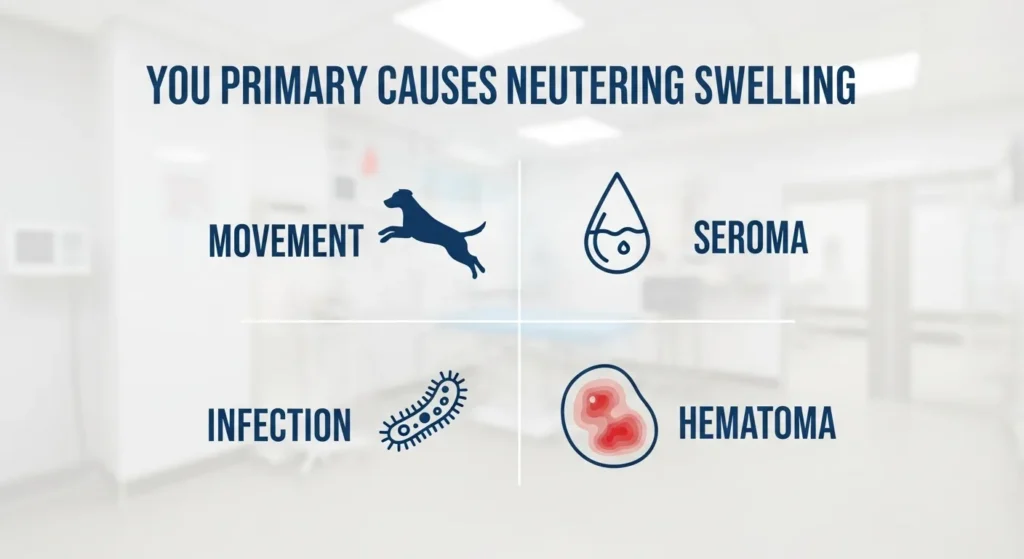
Seroma (Fluid Accumulation)
A seroma forms when clear fluid collects under the skin near the incision.
It usually feels soft or squishy — like a water balloon. Seromas are often caused by:
- Too much movement after surgery
- Jumping or running too early
- Licking or irritation of the wound
Most small seromas resolve on their own within 1–2 weeks. However, larger ones may need to be drained by a vet.
Hematoma (Internal Bleeding)
A hematoma happens when small blood vessels break and blood pools beneath the incision.
It feels firm and swollen, and may have a deep red or purple tint.
Common causes include:
- Dogs that were too active after surgery
- Post-surgery trauma (jumping, rough play)
- Insufficient post-op rest
Hematomas are more common in male dogs since the scrotal area can fill with blood easily. If it continues to grow or causes discomfort, a vet should evaluate it immediately.
Infection or Abscess Formation
If the swelling becomes hot, red, or starts oozing fluid, your dog might have an infection.
An abscess (a pocket of pus) may form beneath the skin if bacteria enter the incision.
⚠️ Warning signs of infection:
- Increasing redness or swelling after 3 days
- Thick yellow or green discharge
- Foul odor
- Pain when touched
- Lethargy, loss of appetite, or fever
Infections require immediate veterinary attention and antibiotics. Never try to pop or drain swelling yourself — it can make things worse.
Male vs. Female Dogs: What’s Different?
Male Dogs (After Neutering)
Male dogs often have noticeable swelling around the scrotum area.
Even though the testicles are removed, the scrotal sac remains, and it can appear enlarged or puffy due to inflammation.
This is usually normal and resolves in a week or two. However:
- If the area is purple, very hard, or growing, it may be a hematoma.
- If fluid builds up inside, it may be a seroma.
Keeping your male dog calm and limiting activity is crucial to prevent swelling from worsening.
Female Dogs (After Spaying)
Females can show mild swelling along the lower belly near the incision.
This should remain soft and minimal. A hard lump, redness, or discharge could indicate infection or a suture reaction.
Since female incisions are internal, their swelling is typically less visible — but still needs monitoring.
How Long Does Swelling Last After Neutering?
Most dogs heal smoothly, and swelling typically follows this pattern:
| Timeline | What Happens |
|---|---|
| Day 1–2 | Mild swelling, redness, and tenderness (normal) |
| Day 3–4 | Swelling may peak slightly, then begin reducing |
| Day 5–7 | Area starts to look better, less red and puffy |
| Day 10–14 | Most swelling gone, incision closing well |
If swelling lasts more than 10–14 days or seems to get worse, your vet should check for infection or fluid buildup.
How to Reduce Swelling After Neutering
Here’s what you can do to safely ease swelling and speed up recovery:
1. Apply Cold Compress (First 48 Hours)
Use a clean towel wrapped around an ice pack or frozen peas.
Hold it gently against the swollen area for 5–10 minutes, two or three times a day.
This reduces inflammation and discomfort.
Never apply ice directly to your dog’s skin.
Switch to Warm Compress (After 3 Days)
After the initial 72 hours, switch to a warm compress.
It helps increase blood flow and supports faster healing.
Use a clean cloth soaked in warm (not hot) water and apply for 5–10 minutes twice daily.
Restrict Activity
Movement increases swelling. For 10–14 days, avoid:
- Running
- Jumping
- Playing roughly
Leash walks only for bathroom breaks. The calmer your dog stays, the faster they heal.
Prevent Licking and Chewing
Licking introduces bacteria and slows healing. Use:
- An e-collar (cone)
- Inflatable recovery collar
- Soft recovery suit or T-shirt
Check that your dog can’t reach the incision when resting.
Follow Vet Prescribed Medications
Give antibiotics or anti-inflammatories exactly as prescribed.
Skipping doses can lead to infection or pain returning.
If swelling persists despite meds, call your vet — don’t self-treat.
Keep the Area Clean and Dry
No baths, grooming, or swimming until your vet approves.
Clean any discharge gently using a damp sterile gauze pad if needed.
Avoid hydrogen peroxide — it delays healing.
Home Remedies (Vet Approved)
You can complement vet care with these safe methods:
- Epsom Salt Compress: Dissolve 1 tbsp of Epsom salt in warm water, soak a towel, and apply for 5 minutes (if vet agrees).
- Chamomile Tea Compress: Soothing and mildly antibacterial.
- Rest & Comfort: Soft bedding in a quiet room helps reduce agitation and swelling.
Always check with your vet before using any home remedies.
When to Call Your Vet
Don’t wait too long if something doesn’t look right.
Contact your vet if:
- Swelling is getting worse after 3 days
- The incision site feels hot, hard, or painful
- There’s yellow or bloody discharge
- Your dog seems unusually tired, not eating, or has a fever
- The swelling returns after healing
Catching complications early can save your dog from discomfort and prevent more serious infection.
Preventing Swelling After Neutering
You can minimize swelling by following these golden rules:
- Keep your dog calm for at least 10 days
- Use a cone or recovery suit to prevent licking
- Don’t allow running or jumping
- Check the incision twice a day
- Feed light meals and keep hydration normal
- Follow up with your vet for the scheduled recheck
Consistency during the healing period is key — one moment of play can undo days of recovery.
Common Myths About Post-Neuter Swelling
Myth 1: Swelling Means Infection
Not always — mild swelling is part of normal healing unless it worsens or leaks fluid.
Myth 2: You Should Massage the Area
Never massage the swollen site; it can reopen the incision or cause bleeding.
Myth 3: Antibiotics Fix Everything
Antibiotics won’t reduce normal inflammation. They’re only for infections.
Myth 4: It’s Okay to Skip the Cone if My Dog is Calm
Even calm dogs may lick when unsupervised. Always use protection for at least 10 days.
How Vets Diagnose Serious Swelling
If swelling doesn’t go away, your vet may use:
- Palpation: Feeling for fluid or firmness under the skin.
- Ultrasound or X-ray: To check for seroma or hematoma.
- Fluid sampling: To confirm if it’s infection or just fluid buildup.
These steps help determine if your dog needs drainage, antibiotics, or just rest.
Recovery Timeline at a Glance
| Days Post Surgery | What to Expect | What to Do |
|---|---|---|
| 1–2 Days | Mild swelling, pink incision | Apply cold compress |
| 3–5 Days | Slight firmness, reducing redness | Switch to warm compress |
| 6–10 Days | Swelling fades, dog more active | Keep restricted activity |
| 11–14 Days | Nearly healed incision | Vet check & cone removal |
Final Thoughts
A bit of swelling after neutering is nothing to panic about — it’s part of the healing process.
The key is knowing what’s normal and what’s not.
If the swelling stays mild and your dog seems comfortable, you’re doing great.
But if things worsen, contact your vet immediately quick action ensures smooth recovery and peace of mind.
Your dog depends on your care during this phase, and with the right attention, they’ll be back to wagging tails and happy walks in no time.


